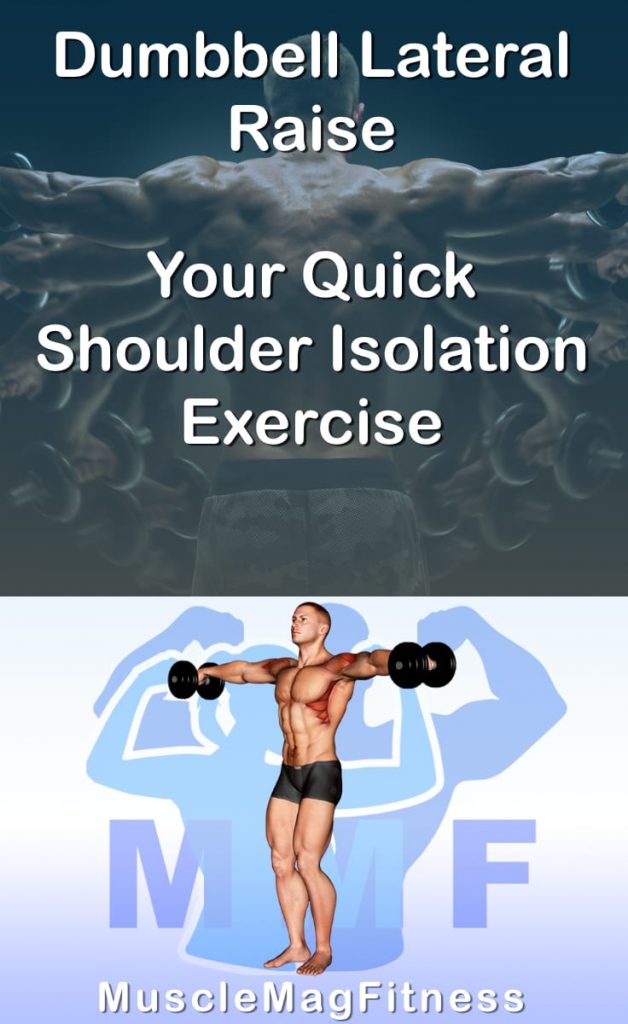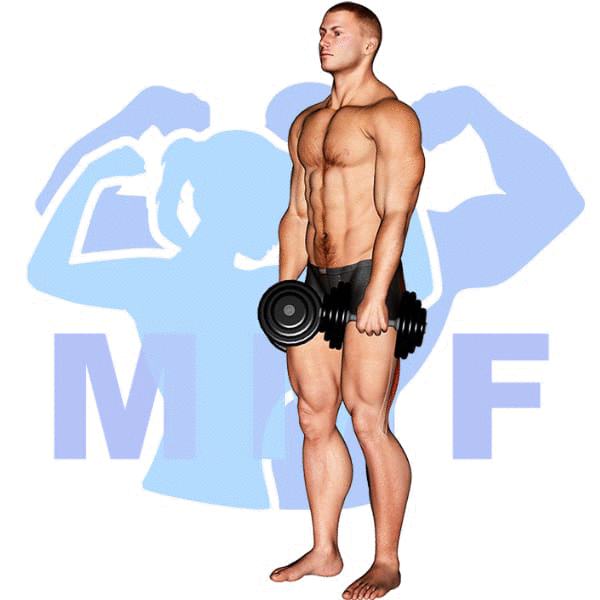Do you struggle with performing a proper dumbbell lateral raise? You’re not alone. This common exercise is often executed incorrectly, leading to shoulder pain and limited progress. It’s important to note that this isn’t your fault! The shoulders are one of the most complex and delicate regions of the body, which can make performing exercises like the dumbbell lateral raise difficult. But don’t fret, in this blog post, we’ll break down the proper form and provide tips to help you master this exercise and prevent injury. Let’s get started!
Dumbbell Lateral Raise Summary
- Primary Muscles: Deltoid – Lateral
- Secondary Muscles: Deltoid – Anterior, Serratus Anterior, Supraspinatus, Trapezius – Lower, and Trapezius – Middle
- Equipment: Dumbbells
- Mechanics Type: Isolation
- Force: Push
- Utility: Auxiliary

Dumbbell Lateral Raise Instructions
- Get your dumbbells and stand up straight with them at your side.
- Next, raise the dumbbells up to your side until your arms are parallel with the floor, don’t bench your arms.
- Then slowly lower the dumbbells back to your side.
- Continue until you have executed a complete set.
Video Tutorial
Dumbbell Lateral Raise Muscles
Target (Agonist)
Synergists
Dynamic Stabilizers
- None
Stabilizers
- Levator Scapulae
- Trapezius – Upper
- Wrist Extensors
Antagonist Stabilizers
- None

Benefits of Dumbbell Lateral Raise
Performing the Dumbbell Lateral Raise exercise can be an effective way to strengthen and tone the lateral deltoid muscle. This exercise targets the shoulders and can help you increase your shoulder strength and stability. This exercise requires you to hold dumbbells at your sides while raising them up to shoulder height. By performing this exercise regularly, you can increase the strength and size of your lateral deltoid muscle. Additionally, the Dumbbell Lateral Raise can help you improve your posture and shoulder mobility. As a result, it can help improve your overall performance in other exercises, such as pushups and pull-ups.
Tips for Performing Dumbbell Lateral Raise
In order for you to achieve the optimum improvement, you need to focus on these easily done tips. Furthermore, whenever you want to avoid getting an injury, you ought to adhere to these tips.
- Concentrate On Inhaling And Exhaling. For this and most exercises respiration is very important. You have to be breathing out during your primary muscle flexing and inhaling when the target muscles are extending.
- Slow Every Repetition Down For Improved Muscle Hypertrophy. By Raising the time under tension you are engaging your muscles more and they will respond by developing toned muscles. You can accomplish this without raising the weight by doing slow reps roughly 4 – 6 seconds flexing and pause then 4 – 6 seconds extending.
- Perform At Least 3 Of 8-20 Repetitions For Hypertrophy. Presently there are numerous theories regarding how Increased Muscle Size is caused, most concur that sets using 60-80% of your respective 1RM are going to resulted in muscle growth.
- Breathe In When You Stretch Your Muscle Tissue And Exhale When You Contract Your Muscle Tissue.
Benefits and Tips Video
Frequent Mistakes To Avoid
You ought to stop these regular issues to manage quality technique and build muscle. As well, when you prevent these issues you will decrease the likelihood of experiencing injuries.
- You Must Not Make It To Easy. The primary way to improve strength is to challenge yourself.
- You Must Not Forget Your Cooldown. You will likely reduce your healing time frame and help reduce soreness when you accomplish a good cool-down.
- Stop Trying To Overlook Any Pain. Stiff and sore muscles and an injury pain are not necessarily always the same. Whenever you feel serious pain any time you are training you should stop, or you could simply just mhelp to make your injury worse yet.
Find More Dumbbell Exercises Here
Variations and Complementary Exercises
If you’re looking for exercises to supplement or replace Dumbbell Lateral Raise, then there are plenty of options available. Here are some variations, complements, and alternatives that will work similar muscles as the Dumbbell Lateral Raise.
Dumbbell Upright Row

The Dumbbell Upright Row is an excellent complementary or alternative exercise to the Dumbbell Lateral Raise. This exercise targets the shoulder muscles in a similar way, but also works the trapezius muscles and biceps. To perform this exercise, stand with feet shoulder width apart and a dumbbell in each hand, palms facing your body. Keeping the elbows close to your body, lift the dumbbells up towards your chest while keeping your torso stationary. Slowly lower the dumbbells back to the starting position and repeat. This exercise can be done as part of a shoulder workout routine, or as an alternative to the Dumbbell Lateral Raise to target the same muscle groups.
EZ Bar Upright Row
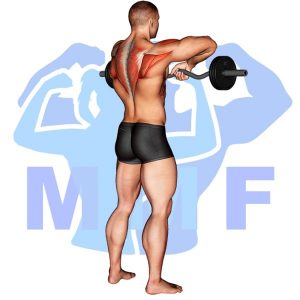
The EZ Bar Upright Row is an effective complementary or alternative exercise to the Dumbbell Lateral Raise. This exercise primarily works the shoulder muscles, but also involves muscles in the arms, core and back. The upright row utilizes a barbell, which allows for a more dynamic movement than a dumbbell, as the lifter can move the weight in an up-and-down motion. The upright row targets muscles in the middle deltoid, as well as the trapezius and rhomboids. This exercise also requires more balance and stability than the Dumbbell Lateral Raise, as you are standing while lifting the barbell.
Incline Dumbbell Front Raise
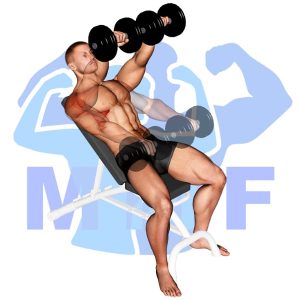
The incline dumbbell front raise is an excellent alternative or complementary exercise to the dumbbell lateral raise. This exercise focuses on the anterior deltoid and the biceps, while also engaging the upper back and core muscles for stability. To perform this exercise, begin by sitting on an incline bench with a pair of dumbbells in each hand. Keeping your back flat against the bench and your elbows slightly bent, raise the dumbbells up and forward until your arms are parallel to the ground. Lower the dumbbells slowly to the starting position and repeat for desired repetitions. By including the incline dumbbell front raise into your workout routine, you can add variety to your shoulder exercises and maximize the strength gains of both exercises.
Check Out These Top Dumbbell Exercises
Incline Dumbbell Lateral Raise

The incline dumbbell lateral raise is a great complementary or alternative exercise to the dumbbell lateral raise. This exercise works the same muscles, but with an added focus on the deltoid muscles of the shoulder. This exercise is performed by holding two dumbbells in each hand and raising them out to the sides at a 45 degree angle. As you raise the weights, concentrate on keeping your elbows slightly bent and bringing your arms up as high as you can. The incline dumbbell lateral raise is an effective exercise for strengthening and toning the shoulders and is an excellent choice for those looking to add variety to their routine.
Incline Dumbbell One Arm Lateral Raise

The Incline Dumbbell One Arm Lateral Raise is a great alternative or complementary exercise to the Dumbbell Lateral Raise. This exercise is a great way to increase shoulder strength while also providing an additional challenge to the traditional lateral raise. It involves using one arm to raise a dumbbell from the hip up to the shoulder at an incline angle. This exercise targets the middle deltoid muscle, which is important for stabilizing the shoulder joint and for strong, healthy shoulders. The Incline Dumbbell One Arm Lateral Raise can be performed with moderate weight and higher reps for increased shoulder strength and definition, or with heavier weight and lower reps for increased power and strength.
Incline Dumbbell Raise

The Incline Dumbbell Raise is a great complementary or alternative exercise to the Dumbbell Lateral Raise. It targets the same muscles as the Lateral Raise, but by performing the exercise on an incline bench, you are able to add more of an emphasis on the upper deltoids. To perform this exercise, you will need a bench set at an incline and two dumbbells. Start by sitting on the bench with the dumbbells in each hand and your palms facing each other. While maintaining a slight bend in your elbows, raise the dumbbells up and out to your sides until they reach shoulder height. Hold the position for one second, then slowly lower the weights back down to your starting position. This exercise can be done for 8-12 repetitions.
Find More Shoulders Exercises Here
Opposing Complementary Exercises
In order to maximize the benefits of the Dumbbell Lateral Raise, it is important to include exercises that work the opposing muscles. Doing so will help create balance in the body and ensure that the muscles are properly challenged and developed. Here are a few exercises that work the opposite muscles as the exercise Dumbbell Lateral Raise:
Lever Decline Chest Press (Machine)

The Lever Decline Chest Press Machine is a great way to complement the exercise Dumbbell Lateral Raise. This machine targets the pectoral muscles, which are the opposing muscle group to the deltoids used in the Dumbbell Lateral Raise. By performing this exercise you can ensure balanced and symmetrical development of your chest and shoulders. Furthermore, the Lever Decline Chest Press Machine allows you to work at a greater range of motion than is possible with the Dumbbell Lateral Raise, resulting in greater gains in size and strength.
Barbell Reverse Grip Decline Bench Press

The Barbell Reverse Grip Decline Bench Press is an effective exercise for targeting the chest and triceps muscles. This exercise is a great complement to the Dumbbell Lateral Raise as it works the opposite muscle group. The reverse grip position forces the chest muscles to work harder while the triceps are also engaged. The decline position of the bench allows for a greater range of motion, resulting in a more intense workout. This exercise can be used to increase strength and size in both the chest and triceps muscles, making it an ideal complementary exercise to the Dumbbell Lateral Raise.
Barbell Bench Press
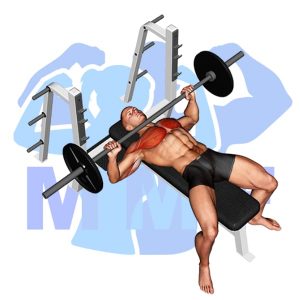
The Barbell Bench Press is an effective exercise for building strength and power in the chest and triceps. This exercise is complementary to the Dumbbell Lateral Raise, which works the shoulder muscles. By using opposing muscle groups, the Barbell Bench Press and Dumbbell Lateral Raise can help to create a balanced workout routine. The combination of these two exercises can help to maximize strength gains and improve overall fitness.
Perfect Your Lateral Raises with Dumbbells Now!
Perfecting your lateral raises with dumbbells is essential for building strong shoulders. Before diving into higher weight, make sure you have the proper form down to avoid injury. Start with a low weight and slowly increase as you feel more comfortable. Remember to keep your shoulders relaxed and avoid shrugging, which can put strain on your neck. Focus on the movement of the weight going out to the sides, and control it back to the starting position. By practicing correct form, you will engage the correct muscles and maximize your results.
References: Wikipedia | ExRx.net | PubMed.gov | Comprehensive List of Shoulders Dumbbell Exercises
